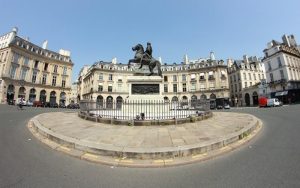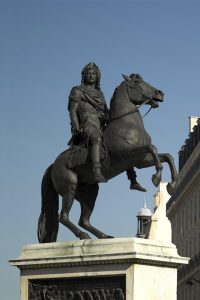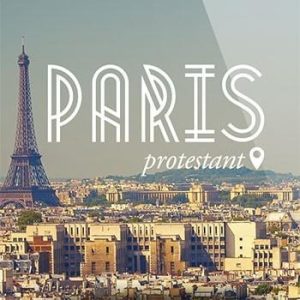The Edict of Nantes signed in 1598 was periodically revised after Henri IV’s death. As the royal power strengthened and thanks to military conquests, the rights of the Protestants never stopped decreasing until the Revocation in 1685 and the new Edict of Fontainebleau. The district of the Victoires in the 2nd arrondissement of Paris bears signs of these changes.
From Palais Brongniart, at the Bourse metro stop, follow the rue de la Banque towards the Louvre Museum. You soon arrive at the Petits-Pères square with the Notre Dame des Victoires basilica. During the siege of La Rochelle against the Protestants in 1629, Louis XIII vowed to build a church dedicated to Mary, if he won. The foundation stone was laid in 1629 in the presence of Jean-Baptiste Gondi, Cardinal de Retz to be, on the site of a Petits-Augustins convent, called Petits-Pères. The church, though provisional, was used until 1666. It has become the vestry of the present building. Various plaques testify these facts.
Upon leaving the Petit-Pères square, follow the rue Notre-Dame des Victoires towards the Louvre. It leads to the Victoires square built to Hardouin Mansart’s designs in 1680 to celebrate the military victories of Louis XIV finalised by the Nijmegen Peace in 1678.
Originally it was to be a closed horse-shoe shaped square. All the houses were two-storeys with mansard roofs, and rest upon large archways each with a medallion depicting the feats of Louis XIV. Many house were later destroyed, their medallions can be seen in the Richelieu gallery of the Louvre, and one can notice they are not pleasing to Protestants.
In the centre of the square a large statue of Louis XIV stood. It was melted down in 1792 during the Revolution when the square was called Place des Victoires nationales. It was replaced by an admirable equestrian statue in 1822.
When you follow the rue Croix des Petits-Champs towards the Louvre you can see houses where Saint-Vincent de Paul, general of the galleys, and Bossuet, a great opponent to the Protestants, lived for a short time.



